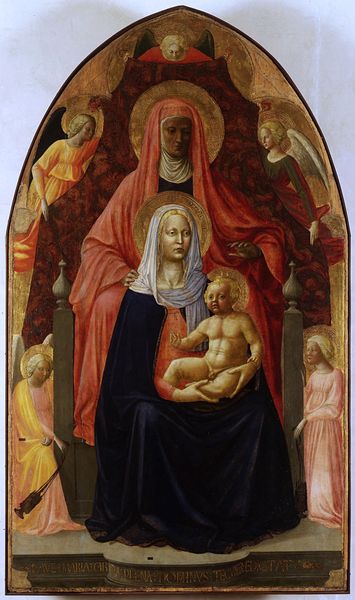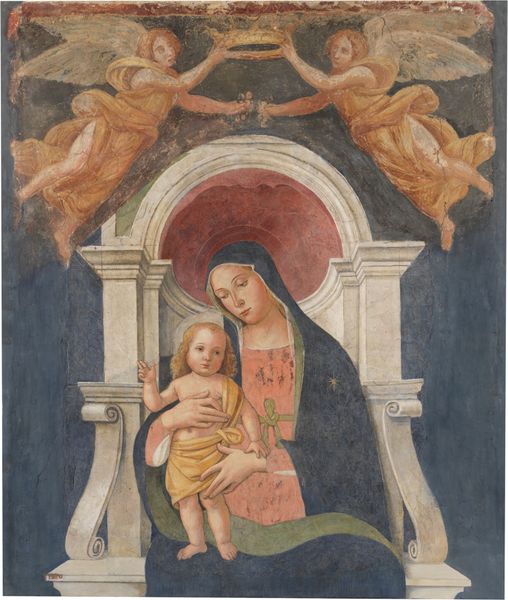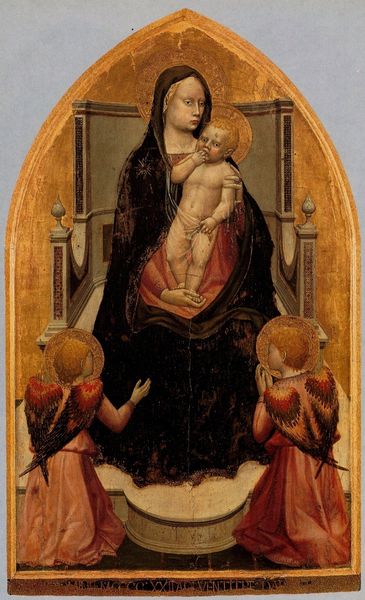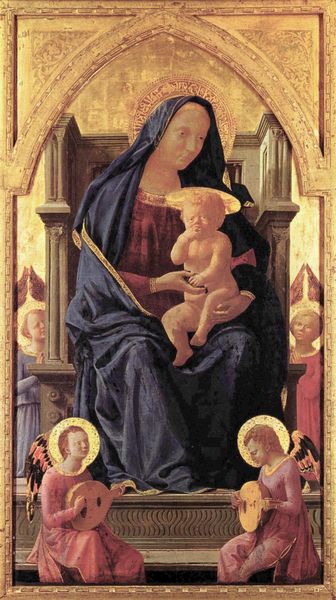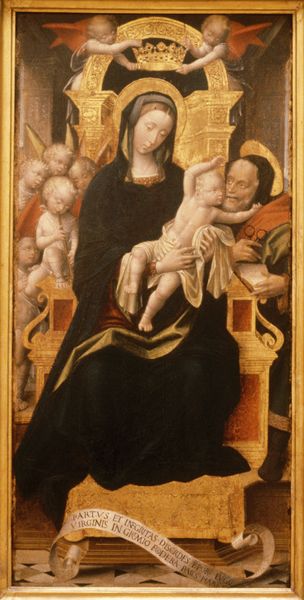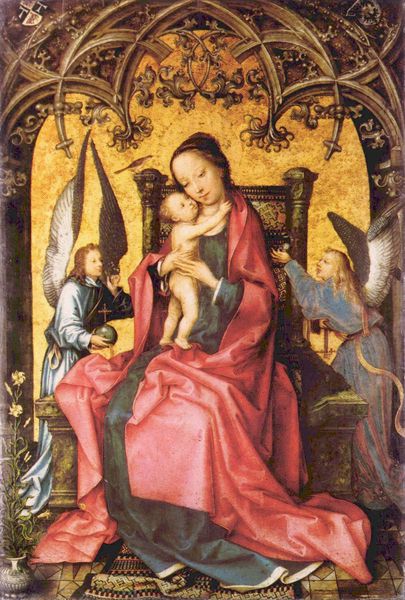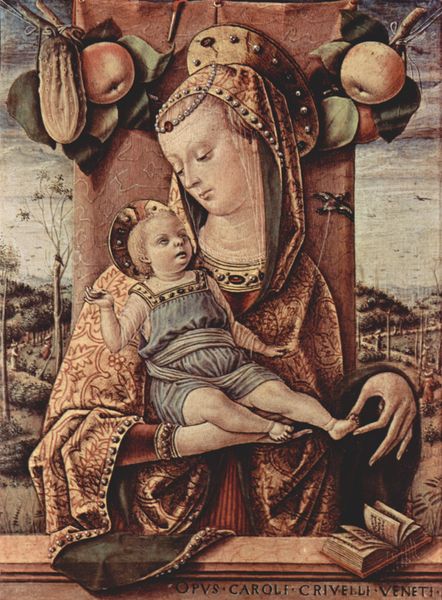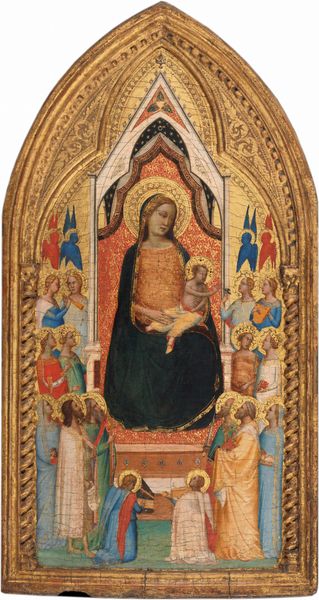
painting, oil-paint
#
portrait
#
high-renaissance
#
painting
#
oil-paint
#
figuration
#
madonna
#
oil painting
#
child
#
christianity
#
italian-renaissance
#
angel
Dimensions: 220 x 115 cm
Copyright: Public domain
The central panel of Andrea Mantegna’s Altarpiece of San Zeno in Verona is tempera on wood panel. Tempera, made from egg yolk, gives the painting a distinctive matte texture, almost like fresco, and requires careful layering of colors to achieve its effects. Note the architectural details Mantegna meticulously rendered. The columns, the classical frieze above, and even the garlands of fruit are all painted with a realism meant to evoke a tangible space. Mantegna was deeply influenced by classical sculpture, which he studied in depth. Look closely, and you will notice figures that seem to be carved in stone, rather than flesh and blood. The angels surrounding the Madonna are given a sense of weight and volume, which lends a sculptural quality to the painting. Mantegna’s skill in rendering surfaces is particularly evident here, especially in the illusion of three-dimensionality. This wasn’t just a display of artistic virtuosity; it was a way to connect the divine with the earthly, collapsing the distance between the viewer and the sacred figures depicted. By considering the materials and techniques of production, we can understand how Mantegna blurred the lines between painting, sculpture, and architecture.
Comments
No comments
Be the first to comment and join the conversation on the ultimate creative platform.

